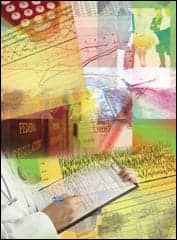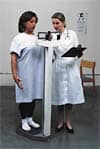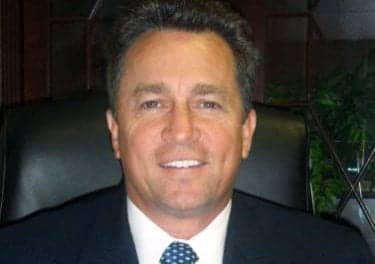 |
American Academy of Sleep Medicine (AASM) accreditation is a time-consuming yet well worthwhile process that is becoming an increasingly important element for the financial viability of sleep centers. AASM accreditation is required for BC/BS reimbursement in many states. Accreditation (not necessarily by the AASM) is also now required in some regions for Medicare reimbursement. Although there are alternative accreditation agencies, such as The Joint Commission for hospital-associated sleep facilities, the most sought after accrediting body is the AASM. The AASM released new standards for accreditation in December 2008 for both sleep disorders centers and laboratories for sleep-related breathing disorders. The new standards took effect July 1, 2009.
For a sleep facility, becoming accredited begins with the submission of an application and supporting documentation, and culminates with a site visit by a sleep-boarded physician or, occasionally, by a PhD Diplomate of the American Board of Sleep Medicine. Below are some misconceptions about accreditation as well as some tips to help ease your sleep facility’s accreditation experience. They are based on my 2 years of experience as an AASM accreditation site visitor as well as my experiences as medical director for three sleep disorders centers as they successfully gained AASM accreditation. The misconceptions and tips apply equally to both sleep disorders centers and laboratories for sleep-related breathing disorders. The standards for the two types of facilities are essentially identical. The wording is slightly different for standard G-1, “Patient Management,” but both types of facilities are required to offer, either within the facility or by referral, “recognized and effective treatments” for the “full range of sleep disorders.”
FIVE ACCREDITATION MISCONCEPTIONS
1. A board certified sleep specialist can be on staff only at three sleep disorders centers/laboratories. This misconception arises from the two definitions of board certified sleep specialist. The first definition is a physician or PhD who is a Diplomate of the American Board of Sleep Medicine or a physician who is certified in sleep medicine by a member board of the American Board of Medical Specialties. The second definition of this term is a physician or PhD who meets the first definition (or meets the AASM’s criteria for being considered board eligible) and provides the quality control functions for a sleep disorders center. Hereafter, “board certified sleep specialist” will be in quotes when referring to the second definition.
In most cases, a sleep disorders center is headed by a board certified sleep physician who fulfills the function of both medical director and “board certified sleep specialist.” In this case, the position is simply called “medical director.” Occasionally, different persons fulfill the responsibilities of “medical director” and “board certified sleep specialist,” usually when the medical director is not a board certified sleep specialist. In these cases, the “board certified sleep specialist” can be a PhD who is a Diplomate of the American Board of Sleep Medicine or a sleep-boarded physician.
For accreditation purposes, the functions of a medical director include oversight of polysomnographic testing as well as ensuring the qualifications of all medical and technical personnel. The “board certified sleep specialist” is responsible for the quality assurance program as well as providing oversight of the polysomnographic testing protocols and ensuring the proper operation and calibration of the testing equipment.
Currently, a physician can fulfill the functions of medical director and/or “board certified sleep specialist” at a total of three sleep facilities, regardless of their accreditation status. The AASM is considering changing the three facility requirement and allowing more than three facilities as long as the total number of testing beds is no more than 16. (As of early September 2009, there was no formal announcement by the AASM, but the online version of the accreditation standards were changed to read: “An individual can serve as medical director of three (3) sleep facilities, regardless of their accreditation status. If an individual is medical director of more than 3 sleep facilities, the total number of beds shall not exceed 16 beds.” This new language has not yet been inserted into the standards for the position of “board certified sleep specialist.”)
With the uncertainty regarding the three facility requirement, any sleep disorders center that this recent change to the accreditation standards might affect is advised to seek clarification from the AASM accreditation staff well in advance of the site visit.
2. Meeting AASM Accreditation Standards will help keep your sleep center in compliance with federal regulations. There has long been a strain between the AASM, which envisions accredited sleep disorders centers as full service entities that provide the entire spectrum of diagnosis and treatment for sleep disorders, and federal regulations regarding testing facilities. In particular, regulations regarding Independent Diagnostic and Testing Facilities (IDTFs) are at times in conflict with AASM standards.
An IDTF is physically and financially separate from a physician’s office or hospital (there are some exceptions for hospitals), and performs diagnostic tests. IDTFs are prohibited from sharing space with another Medicare-enrolled provider. At face value, many of the accreditation standards are impossible for an IDTF to meet. For example, standard G-2, “Documenting Patient Evaluation and Management,” requires that “The sleep facility medical staff must document ongoing evaluation and management of patients with sleep disorders.” Medicare certainly recognizes the role of physicians in supervising the performance of sleep studies as well as interpreting sleep studies at IDTFs, but “management” is not part of the definition of an IDTF. The AASM does note that “staff clinician office(s) of the sleep facility may be separate from the laboratory testing site.” In the past, the AASM has used the concept of “center without walls” to refer to a sleep testing facility and the associated medical practitioners, even if they were separate legally and physically. It is possible to meet both AASM accreditation standards as well as Medicare IDTF regulations, but it would be wise to have an experienced health care attorney look at the arrangement.
One of the standards that may present difficulty for an IDTF is standard H-5, “Database.” According to this standard, “This database must include cases seen by the facility’s medical staff that did not require polysomnography or a portable recording.” Most IDTFs meet this requirement by listing in the database a few of the insomnia or restless legs syndrome patients seen by their medical director, even if the medical director refers patients to multiple sleep centers. Being written up for a HIPAA violation for improper disclosure of protected health information is unlikely. Centers that don’t want to take this risk can obtain the advice of a health care attorney; a properly done business associate agreement may allow the sharing of the information between the physician and the IDTF.
The AASM accreditation standards explicitly limit the number of direct referrals to a sleep facility. Whether a sleep center is legally organized as an IDTF, hospital-associated sleep lab, or extension of a physician practice, it is important to realize that the AASM definition of a “direct referral” is different than the referral definitions in federal regulations, including the anti-kickback rules. The AASM defines a direct referral as “all patients not seen in consultation by a sleep facility staff physician prior to or within three months following an in-laboratory sleep study or a portable monitoring study originally ordered by the patient’s referring physician.” Since a patient first seen by a staff physician shortly after a sleep study would not be considered a direct referral by the AASM standards, there should be no difficulty complying with relevant regulations that mandate direct referrals in certain circumstances—the patient can be seen by the staff physician after the sleep study and be counted as a direct referral for legal purposes, but not as a direct referral by the AASM.
3. It is best to be original when writing your Policy and Procedure Manual. Before an accreditation site visit is scheduled, the application is reviewed by personnel at the AASM central office. A key part of this review is looking over the facility’s policy and procedure manual in detail. Originality is not necessary, and can be harmful.
The policy that most typically causes sleep centers problems is the Multiple Sleep Latency Test (MSLT) policy. To ensure that there are no deviations in your center’s MSLT policy that will delay accreditation, copy box one of “Practice Parameters for Clinical Use of the Multiple Sleep Latency Test and the Maintenance of Wakefulness Test” as closely as possible (available on the AASM Web site).
If you are able to obtain a time-tested policy and procedure manual that has passed previous accreditations, there is no harm in copying the manual (with permission from the owner) as long as you modify it to your center. Also, review it carefully to make sure that it is consistent with the new accreditation standards.
|
Subscribe to Sleep Report to receive updates about accreditation standards. |
4. Your PSG system’s software will automatically generate a report that will meet AASM requirements. When I was an accreditation site visitor in 2007 and 2008, the most common problem I found on inter-scorer reliability reports was that the total amount of each stage of sleep was compared, rather than compared epoch by epoch. It is acceptable to generate the report by hand if your center’s PSG software is not capable of generating an epoch by epoch comparison report.
Make sure that your center’s sleep study reports are in compliance with the AASM Manual for the Scoring of Sleep and Associated Events. In particular, the term “Stage N3” or “NREM 3” should be used in place of the older terminology for slow wave sleep; “Stage N3” replaces the former nomenclature of stage 3 and stage 4 sleep. In most cases, it is not too difficult to modify PSG software so that reports with correct terminology are generated.
5. Perfect documentation isn’t required, as long as the sleep center is in substantial compliance with the spirit of the AASM accreditation standards. Standards J-1, J-2, and J-3 deal with the mandated quality assurance program. In addition to inter-scorer reliability, the program is required to report on three other quality assurance indicators. Common indicators that sleep centers use include patient satisfaction scores, days required from the time of the study to get a report out, and CPAP compliance.
One change between the old and current versions of the standards is that a quarterly report is no longer required. The new requirement is that there must be a report generated “a minimum of once each quarter.” The report must be reviewed, signed, and dated by the medical director or “board certified sleep specialist.” Surprisingly, not having the most recent report signed is a common error at site visits.
The documents submitted to satisfy standard I-1, the Emergency Plan, will be carefully reviewed by AASM central staff prior to the site visit and will be reviewed by the site visitor immediately prior to and/or during the visit. Make sure that your facility has a written plan for each of the emergencies specified by the standards. In addition, if your sleep center performs studies on children younger than age 13, make sure that the emergency plans, especially the cardiac policy, have appropriate modifications for children.
REACHING THE GOAL
Obtaining AASM accreditation is not a process to be taken lightly. In addition to following the above tips, I encourage anyone preparing for accreditation to read the standards carefully several times throughout the process. The AASM accreditation staff and the accreditation site visitors go by a checklist based on the standards. As long as your center meets the standards, it will be granted accreditation.
Michael Rack, MD, is a board certified psychiatrist, sleep specialist, and internist practicing throughout the state of Mississippi. He is medical director of Somnus Sleep Clinic (near Jackson, Miss), Tupelo Sleep Diagnostics, and Forest Sleep Clinic, and blogs at sleepdoctor.blogspot.com. He is on the Board of Directors of the Mississippi Sleep Society and has served on several committees for the American Academy of Sleep Medicine. Dr Rack can be reached at [email protected].





